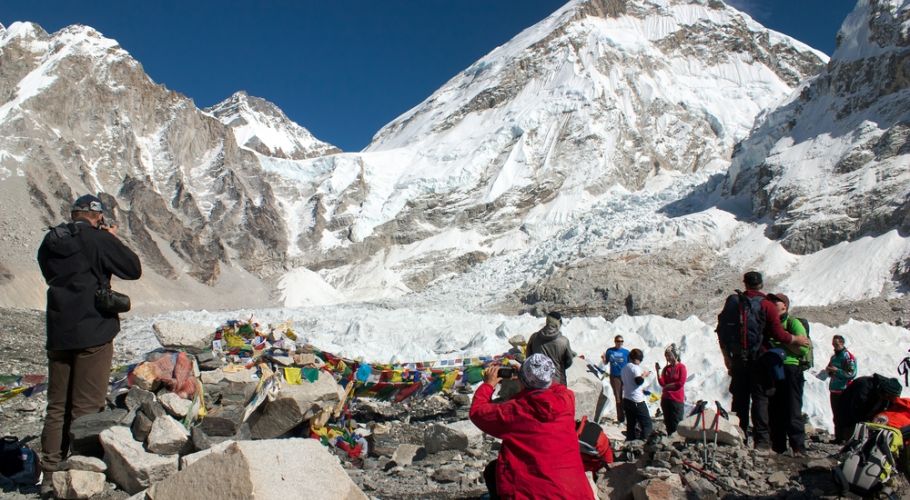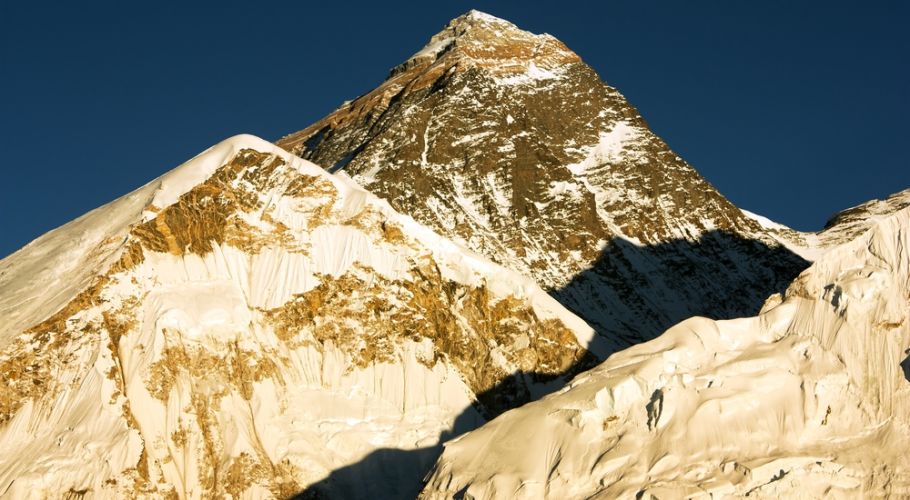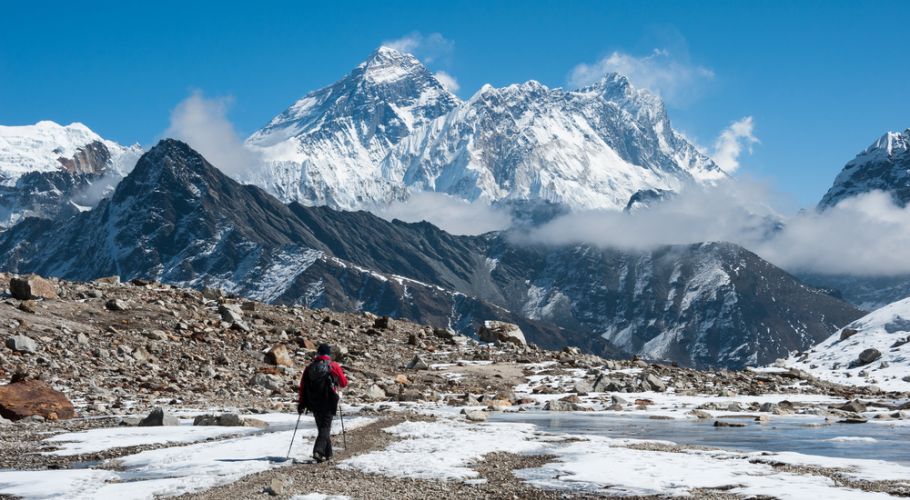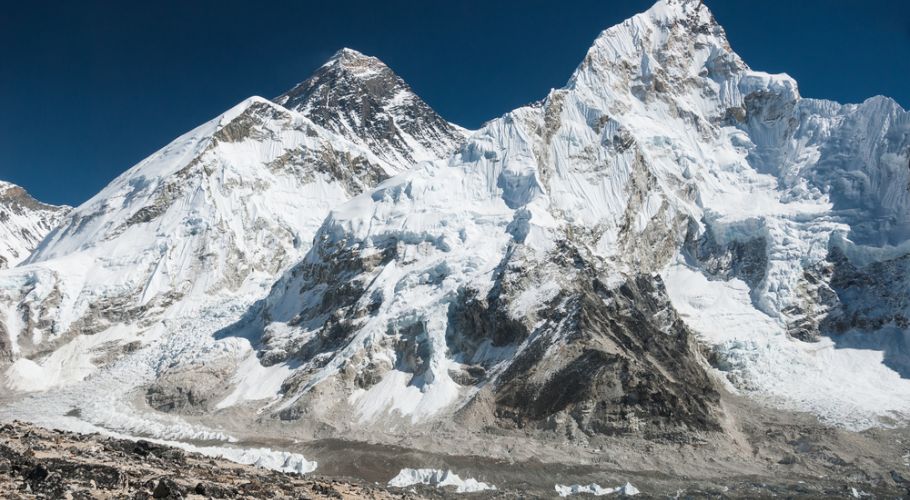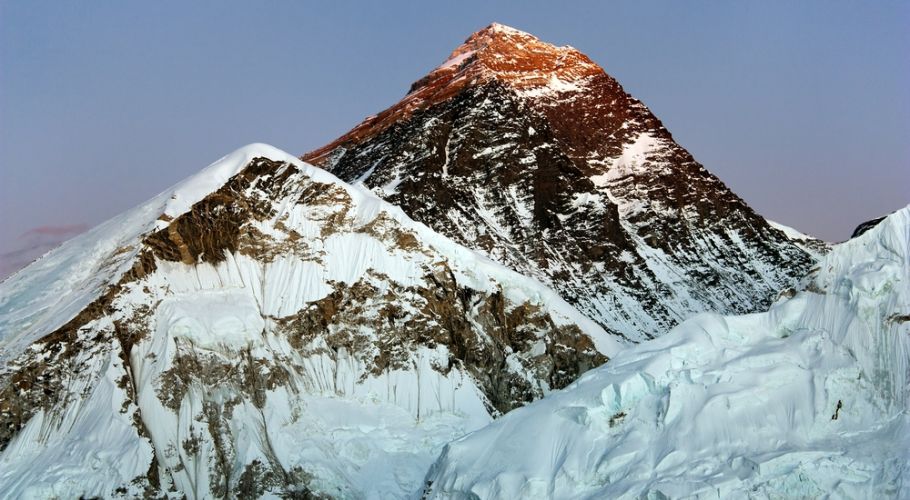Mount Everest is a mountain located in the Himalayan mountain range near the border of Tibet, China and Nepal. Mount Everest reaches a summit at 29,029 feet (8,848 m).
Mount Everest has the distinction of being one of the Seven Wonders of Nature and serves as the Ambassador to the Seven Natural Wonders of Asia.
What makes Mount Everest a natural wonder?
Statistically speaking, Mount Everest represents the tallest mountain in the world. More accurately speaking, it represents the highest point on earth. Technically, it is not the tallest mountain, but it is highest point; there is a difference. Mount McKinley in Alaska has a greater vertical distance between the base of the mountain and the summit peak; the vertical rise ranges from 17,400 to 19,400 feet (5,300 to 5,900 m). However, the tallest mountain in the world is Mauna Kea in Hawaii. The base of this mountain is beneath the sea and features a vertical rise of 6.3 miles (10,200 m) from beneath the sea to the summit at 13,796 feet (4,205 m). The majority of the mountain is underwater.
The base elevation for Mount Everest ranges from 13,800 feet (4,200 m) to 17,100 feet (5,200 m) which provides a elevation rise range from 11,980 to 15,260 feet (3,650 to 4,650 m).
What are the best ways to see Mount Everest?
The easiest way for the majority of tourist to travel and see and Mount Everest is through a scenic flight that goes around the mountain. Small planes will take a group of tourist up and circle Mount Everest providing visitors with a view of the world’s highest point.
What are the best ways to experience Mount Everest?
Climbing or trekking the summit of Mount Everest is only something most people will ever dream about. You must be an experienced climber to make the journey, and the Nepalese government requires that you acquire a $25,000 climbing permit. Collectively, the challenge and the expense takes climbing Mount Everest out of the realm of possibilities for the majority of the world.
Although still costly, many people opt for a trek and climb to base camp. This is often just as thrilling for potential climbers providing an encounter with the world’s highest peak but lessening the threat that comes with pursuing higher elevations. The Himalayas provide some of the most breath taking views of mountain ranges in the world. Traveling to Nepal to experience Mount Everest will certainly prove to be an unforgettable experience.
A trek or climb to base camp combined with a scenic flight around the mountain is probably the best way to experience to totality of Mount Everest.
When is the best time to visit Mount Everest?
Mount Everest is in the mountains and the higher elevations mean that weather is completely unpredictable. Even the projected perfect day weather wise can turn into a nightmare in the spur of a moment. However with stated, the best season to explore Mount Everest is during the months of October and November which introduce the dry season. A second opportunity occurs between the months of February through April which concludes the dry season.
Probably the most important tip is to note the reality that the weather can start off beautifully and a storm can set in on the mountain created life threatening and dangerous conditions for exploration.
What is Mount Everest weather like?
Mount Everest is located in the Himalayan mountains with the base of the mountain starting at over 13,000 feet. This means it is going to be cold. It is and will be cold, the question is only how cold and what other conditions come with it. Wind, snow, and sleet are all conditions that can be expected on Mount Everest at any given moment. The temperatures can and will get well below freezing.
One of the other key concerns is the levels of oxygen. The blood oxygen saturation is 98% or higher near sea level. This saturation drops to around 85 to 87% near base camp. This will get even lower as you ascend further up the mountain. This deprivation of oxygen will cause your typical 20 to 30 breaths a minute to increase to somewhere between 80 to 90. It is said that exhaustion can occur simply by trying to breathe.
Photography Tips for capturing Mount Everest
Equipment freezing and the extra weight makes carrying a camera up the mountain doubtful. All of your energy should be geared at successfully navigating the mountain and keeping yourself safe.
Taking one of the scenic flights around Mount Everest is one way to capture images. Taking treks or climbs to neighboring areas around Mount Everest will allow you to take pictures of the mountain.
Travel tips for visiting Mount Everest
Mount Everest should be on your bucket list. That does not mean you need to plan on reaching the summit of the mountain. The easiest and most probable way to experience the mountain is by leveraging one of the scenic flights around the mountain. This will give you an up close and personal view of the world’s highest peak.
The more adventurous should plan on trekking up to base camp. This gives them the privilege of actually saying they were on Mount Everest.
